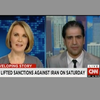The upheavals in Syria have generally been interpreted from a culturalist or structuralist perspective. Some attribute the emergence of the democratic uprisings to historic long-term tensions between different ethnic groups which include Alaawite, Syrian Turkmen, Armenians, Druze, Sunnis and the Assyrians (a significant Christian minority in Syria). Although the Baa'th Socialist Party dominates Syrian politics, other political parties such as the National Progressive Front as well as Kurdish and Assyrian parties have been viewed, by some, as another source of the conflict.
Those who have applied a structuralist analysis, view the situation in Syria as a class struggle between the middle class, the proletariat, traditional merchant bourgeoisie, and the bureaucrat bourgeoisie (the apparatchiks, Assad's apparatuses). However, it is crucial to view all the uprisings taking place in the Middle East and Muslim world from a different lens. The new generations of youth existing within the socio-political and socio-religious configurations of this society are striving to achieve a post-Islam era.
Post-Islamism should not be characterized as anti-religious but rather as a movement which combines religion and civil rights. This new generation endeavors to merge rights and religiosity, freedom and faith, liberty and religion. Therefore, rather than over-emphasizing mandatory duties, post-Islamism emphasizes rights, rule of law, and pluralism as opposed to adherence to a singular authoritative voice. In addition, it aims to marry Islam with modern values such as individuality, democracy, and freedom. The new generation does not oppose secularism. Rather it strives for secularism by struggling for liberation from rigid authoritarian and theocratic regimes. A wide range of people including youth, students, women, and state employees, are calling for individual rights, tolerance and gender equality. The daily resistance and struggle of ordinary people, which sparked the on-going demonstrations, has compelled political actors to initiate crucial paradigm shifts.
One example of this daily resistance includes the success that women have experienced in their attempts to challenge patriarchal power despite limited domains and opportunities for open political activism. Other examples include urban youth struggling to create a space for "fun" lifestyles and ideologies which are not approved by the state or by Islamist movements; urban poor running their own parking services; Iranian youth throwing parties behind closed doors; daily cosmopolitan co-existence between Muslims and Christians in an Egyptian suburb; Muslim women wearing the veil, or hijab, based on their individual preferences; Egyptian and Iranian youth expressing themselves by balancing God, fun and sex; and the ways in which urban public spaces have transformed into locations of struggle in many parts of the Middle East.
Resistance in Syria centers on the struggle against hunger, poverty and unemployment rather than general civil disobedience. According to UN figures, about 25 percent of the people live below the poverty line. According to opposition economist Aref Dalila, 50 percent live below the poverty line. When the Baath Socialist Party rose to power, modes of the production remained the same as during the previous party.
Under the rule of Bashar al-Assad, capital is accumulated in a few new sectors that are controlled by the bureaucratic bourgeoisie and dominant modes of production remained intact. Bashar continues the policies of his father, Hafez al-Assad, who fractured the middle class during his reign which led to a vast increase in the disparity between the rich and poor. While, a small portion of the middle class has been able to accumulate capital, others have experienced a decrease in their quality of life as they have joined the ranks of the wage-earning classes who make up the majority of the population. Today a civil service employee or school teacher must work two or three jobs just to meet the basic needs of his or her family, which is likely to include some unemployed members. For example, he might teach by day and drive a taxi by night. Additionally, the peasant class has expressed support for the uprisings because, although the rural bourgeoisie and wealthy landlords are not politically allied with the regime, their economic interests are aligned.
This Article was first published in Harvard International Review.
